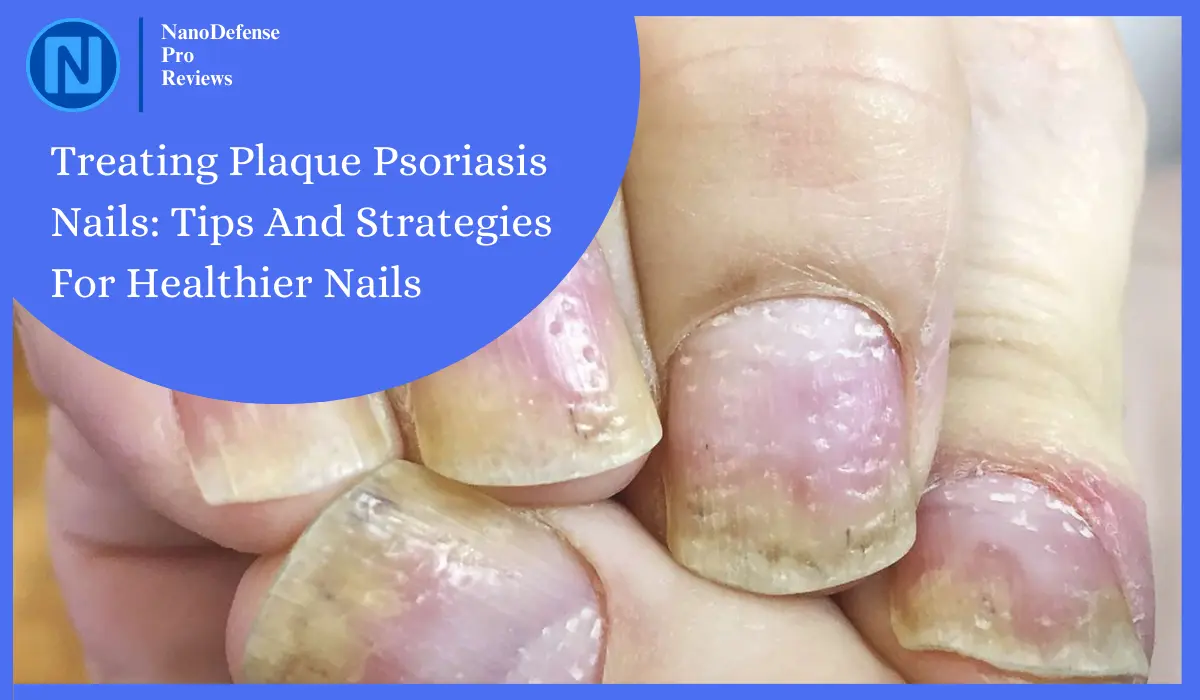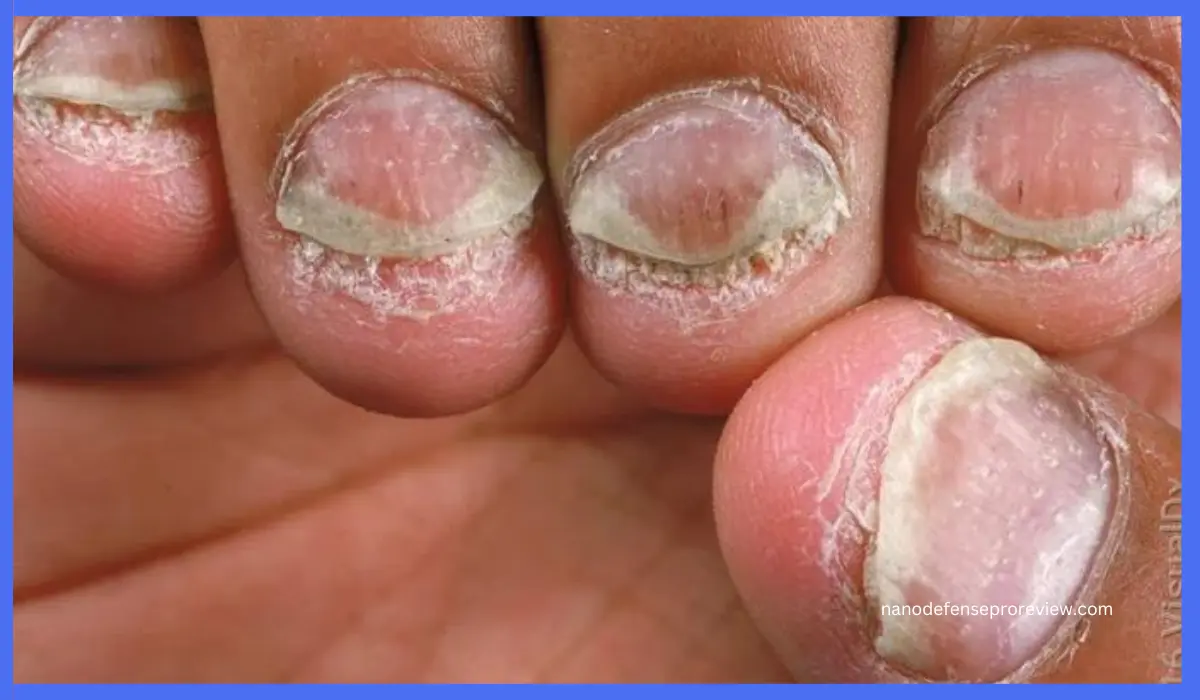Treating Plaque Psoriasis Nails: Tips And Strategies For Healthier Nails
Nail psoriasis, common in individuals with plaque psoriasis, presents as nail discoloration, pitting, separation, and nail bed buildup. Treatment includes biologics, methotrexate, acitretin, cyclosporine, and apremilast to clear skin and nails. Nail infections are also addressed, with dermatologists monitoring for signs and providing necessary treatment. Managing nail psoriasis can be challenging, requiring consistent treatment adherence and nail care practices. Early detection through dermatology appointments is crucial to prevent worsening symptoms and potential complications like psoriatic arthritis. Effective treatment can alleviate discomfort, improve nail health, and enhance the overall quality of life for individuals with nail psoriasis.

Disclaimer: This article has been generated with the assistance of AI tools. While our research team has fact-checked the content, readers should independently verify information for accuracy and reliability.
Plaque psoriasis is a chronic autoimmune condition that affects the skin, causing the formation of thick, red, scaly patches. However, many individuals with plaque psoriasis also experience nail psoriasis, a condition that can lead to various nail changes and abnormalities. Understanding the causes, symptoms, diagnosis, prevention, and treatment options for nail psoriasis is crucial for managing the condition effectively and maintaining healthy nails.
Causes Of Nail Psoriasis

Nail psoriasis is believed to have a strong genetic component, with certain genes increasing an individual’s susceptibility to the condition. Additionally, immune system dysfunction plays a significant role in the development of nail psoriasis. Environmental factors, such as stress, injury to the nails, and certain medications, can also trigger or exacerbate nail psoriasis symptoms. It is important to note that nail psoriasis often occurs alongside plaque psoriasis, suggesting a strong link between the two conditions.
Symptoms Of Nail Psoriasis
The symptoms of nail psoriasis can vary in severity and may affect one or multiple nails on the hands or feet. Common signs include:
- Pitting: Small, pinprick-like depressions on the nail surface.
- Discoloration: Nails may appear yellow, or brown, or have a salmon-colored patch.
- Thickening: Nails can become thick, ridged, or deformed.
- Crumbling: Nails may become brittle and crumble or break easily.
- Detachment: The nail may separate from the nail bed (onycholysis).
These symptoms can cause physical discomfort and emotional distress, impacting an individual’s quality of life.
Diagnosis And Tests
Diagnosing nail psoriasis typically involves a thorough physical examination and a review of the patient’s medical history. A dermatologist or healthcare professional will assess the nails for characteristic signs of psoriasis and may take a nail clipping or biopsy for further analysis. In some cases, additional tests may be conducted to rule out other nail conditions, such as fungal infections, or to confirm the presence of nail psoriasis.
Prevention Of Nail Psoriasis
While there is no guaranteed way to prevent nail psoriasis, certain measures can help minimize the risk of developing the condition or reduce the severity of symptoms:
- Maintain good nail hygiene: Keep nails clean, dry, and trimmed.
- Avoid trauma or injury to the nails: Protect nails from excessive pressure, friction, or impact.
- Use gloves when cleaning or doing manual labor to protect nails from harsh chemicals and irritants.
- Manage stress: Practice stress-reduction techniques, as stress can trigger psoriasis flare-ups.
- Maintain a healthy lifestyle: Eat a balanced diet, exercise regularly, and avoid smoking and excessive alcohol consumption.
Treatments For Nail Psoriasis
Treatment options for nail psoriasis aim to alleviate symptoms, improve nail appearance, and slow down the progression of the condition. The choice of treatment depends on the severity of the symptoms and the individual’s overall health. Some common treatments include:
- Topical medications: Corticosteroid creams, vitamin D analogs, and retinoids applied directly to the nails and surrounding skin.
- Oral medications: Systemic drugs, such as methotrexate, cyclosporine, or apremilast, may be prescribed for more severe cases.
- Phototherapy: Ultraviolet light therapy (UVB or PUVA) can help slow down the growth of skin cells and improve nail appearance.
- Biologic therapies: Injectable medications, such as adalimumab or etanercept, target specific parts of the immune system to reduce inflammation and improve symptoms.
Complementary therapies and nail care products, like NanoDefense Pro, may be used alongside conventional treatments to promote healthier nails and provide additional relief from nail psoriasis symptoms. These products often contain ingredients that help to nourish, strengthen, and protect the nails. Regular follow-ups with a healthcare professional are essential to monitor progress and adjust treatment plans as needed.
Sum Up
Nail psoriasis is a challenging condition that can significantly impact an individual’s quality of life. By understanding the causes, symptoms, and available treatment options, those affected by nail psoriasis can take proactive steps to manage the condition and maintain healthier nails. If you suspect you have nail psoriasis or any other nail condition, it is crucial to seek professional medical advice for an accurate diagnosis and personalized treatment plan. Early detection and proper management can greatly improve the outcomes and quality of life for individuals with nail psoriasis.

Lisa Miller
Dr. Lisa Miller is a board-certified Dermatologist with over 15 years of experience treating a wide range of skin, hair, and nail conditions. She received her medical degree from the prestigious Columbia University College of Physicians and Surgeons and completed her dermatology residency at the University of California, San Francisco, one of the top dermatology training programs in the country. Dr. Miller is an active member of the American Academy of Dermatology and has authored numerous peer-reviewed articles and book chapters on the latest advancements in dermatological care. She is frequently invited to speak at national and international medical conferences, sharing her expertise with other clinicians. In her private practice, Dr. Miller takes a patient-centered approach, collaborating closely with each individual to develop customized treatment plans. She is passionate about empowering her patients to achieve optimal skin, hair, and nail health through a combination of the latest medical therapies and lifestyle recommendations.
